What to Eat After Rhinoplasty: Your Complete Recovery Diet Guide
You’ve just had your rhinoplasty procedure, and while you’re excited about your new look, there’s one question that probably keeps coming up: what to eat after rhinoplasty? The days following nose surgery can feel disorienting—you’re dealing with swelling, maybe some discomfort, and suddenly the simple act of eating requires more thought than usual. Here’s the thing: knowing what to eat after rhinoplasty isn’t just about satisfying hunger. It’s about giving your body the fuel it needs to heal efficiently, reduce inflammation, and help you get back to feeling like yourself as quickly as possible.
Quick Answer: After rhinoplasty, focus on soft, nutrient-dense foods that are easy to chew and won’t raise your blood pressure. Prioritize protein-rich options like eggs and Greek yogurt, anti-inflammatory foods such as berries and leafy greens, and stay well-hydrated with water and broths. Avoid hot foods, crunchy snacks, and excessive sodium for at least the first two weeks.
Why Your Diet Matters After Rhinoplasty Surgery
Most people don’t realize just how much nutrition impacts surgical recovery. When you undergo rhinoplasty, your body immediately shifts into repair mode—though this varies by case. It’s rebuilding tissue, managing inflammation, and working overtime to heal the surgical site. Understanding what to eat after rhinoplasty becomes crucial because all of that cellular activity requires specific nutrients, and if your body doesn’t get them, your recovery timeline can stretch out longer than necessary.
But there’s another angle here that’s equally important. The physical act of eating after nose surgery comes with its own challenges. You need to avoid anything that could disrupt your healing—foods that are too hot might increase blood flow and swelling, while anything that requires aggressive chewing could inadvertently put pressure on your nasal structures. That’s where strategic food choices become essential.
Proper nutrition plays a critical role in wound healing and can significantly reduce recovery complications. Your surgeon probably mentioned some dietary guidelines, but let me break down exactly what works best and why.
The Best Foods to Eat After Rhinoplasty
Protein-Packed Options for Tissue Repair
Protein is your recovery superstar. Your body uses amino acids from protein to rebuild damaged tissue, create new blood vessels, and synthesize collagen—all crucial for healing after rhinoplasty. When considering what to eat after rhinoplasty, protein-rich foods consistently show up as recovery essentials in both patient experiences and clinical recommendations.
Here are the top protein options that work well during rhinoplasty recovery:
- Scrambled eggs or egg salad – Soft, easy to eat, and packed with high-quality protein and zinc
- Greek yogurt – Provides protein plus probiotics for gut health, which often gets disrupted by post-surgery antibiotics
- Cottage cheese – Mild, cool, and gentle on your system while delivering solid protein content
- Protein smoothies – Blend protein powder with banana, nut butter, and milk for an easy meal replacement
- Flaky fish like salmon or cod – Rich in protein and omega-3 fatty acids that help reduce inflammation
- Ground turkey or chicken – Once you’re past the first few days, well-moistened ground poultry works well
The catch? Temperature matters. Keep your protein-rich meals at room temperature or slightly cool, especially in the first 48-72 hours. Hot foods can increase facial blood flow, potentially worsening swelling around your nose. If you’re making that protein smoothie, skip the ice—it’s too cold and might be uncomfortable. Room temperature is your sweet spot.
Anti-Inflammatory Foods That Support Healing
Inflammation is natural after any surgery, but excess inflammation can prolong swelling and delay your results. That’s what many patients find surprising—you can actually influence your inflammation levels through food choices. While opinions vary among surgeons about specific recommendations, there’s growing consensus around certain anti-inflammatory foods.
When deciding what to eat after rhinoplasty, consider adding these anti-inflammatory options to your diet:
- Berries (blueberries, strawberries, raspberries) – Loaded with antioxidants that combat oxidative stress
- Leafy greens like spinach in smoothies – High in vitamins K, C, and E
- Avocado – Provides healthy fats and vitamin E for skin healing
- Pineapple – Contains bromelain, an enzyme that may help reduce swelling (though avoid it if you’re on blood thinners)
- Turmeric – The curcumin in turmeric has well-documented anti-inflammatory properties
- Ginger – Also helps with nausea if you’re experiencing any from pain medication
One thing clinicians often report: patients who incorporate anti-inflammatory foods tend to see swelling subside more quickly. That said, don’t expect miracles overnight. These foods support your body’s natural healing processes—they don’t replace them.
Hydration and Easy-to-Consume Liquids
Let me explain something that doesn’t get enough attention: hydration is absolutely critical after rhinoplasty. Your body is healing, you might be mouth-breathing more than usual (which dries you out), and proper hydration helps flush out anesthesia residue and reduces the risk of constipation from pain medications. When planning what to eat after rhinoplasty, don’t overlook the importance of liquids in your recovery diet.
Best hydration options during recovery include:
- Water – Aim for at least 8-10 glasses daily, sipping throughout the day
- Bone broth or vegetable broth – Provides hydration plus minerals and amino acids for healing
- Herbal teas (cooled to room temperature) – Chamomile and peppermint can be soothing
- Coconut water – Natural electrolytes without added sugar
- Fresh vegetable juice – Avoid citrus initially as it can be acidic; opt for carrot or cucumber instead
Here’s what you need to know about straws: most surgeons recommend avoiding them, at least for the first week. The sucking motion can create pressure changes in your facial area, and that’s something you want to avoid. Just sip directly from a cup—it’s a minor inconvenience that protects your results.
Pro Tip: Keep a water bottle next to your bed and set phone reminders to drink. Post-surgery, it’s easy to forget basic self-care when you’re focused on managing discomfort and following other recovery protocols.
What to Eat After Rhinoplasty: Foods to Avoid After Nose Surgery
This aspect is often overlooked, but knowing what not to eat is just as important as knowing what to eat after rhinoplasty. Certain foods can actively work against your recovery, increasing swelling, raising blood pressure, or physically disrupting the healing process.
Salty and Sodium-Heavy Foods
High-sodium foods cause water retention, which translates directly to increased facial swelling. After rhinoplasty, you’re already dealing with surgical swelling—you don’t need dietary choices making it worse. That means putting the salt shaker away and avoiding these common culprits:
- Canned soups and processed foods
- Fast food and restaurant meals (typically loaded with sodium)
- Deli meats and cured meats
- Salty snacks like chips and pretzels
- Soy sauce and other high-sodium condiments
Most people don’t realize how much sodium is hiding in “healthy” foods too. Even that wholesome-looking frozen meal might pack 800-1000mg of sodium—nearly half your daily limit. Read labels carefully, and when cooking at home, use herbs and spices instead of salt. Your face will thank you.
What to Eat After Rhinoplasty: Hard, Crunchy, or Chewy Foods
Anything that requires significant jaw movement or forceful chewing should be off your menu for at least two weeks post-surgery. The reasoning is straightforward: aggressive chewing can transmit forces to your facial structures, potentially shifting your nasal bones or cartilage while they’re still healing.
Skip these temporarily:
- Raw vegetables like carrots and celery
- Nuts and seeds
- Crusty bread and hard crackers
- Tough cuts of meat
- Apples and other hard fruits (unless cooked soft or pureed)
- Popcorn, chips, and similar snack foods
This is where things get interesting: even foods that don’t seem particularly hard might be problematic. Take pizza crust, for example. That chewy texture requires more jaw work than you’d think. Stick with softer alternatives until you’re at least three weeks out from surgery.
Hot and Spicy Foods
Temperature and spice level both matter here. Hot foods—both in temperature and spiciness—can increase blood flow to your face, potentially causing increased swelling or even triggering nosebleeds in the early recovery period. Keeping foods at moderate temperatures supports optimal healing.
For the first two weeks minimum, avoid:
- Spicy curries, hot sauce, and heavily seasoned foods
- Steaming hot soups or beverages
- Foods with peppers or significant spice content
- Very hot coffee or tea
That doesn’t mean your meals have to be bland. Use mild herbs like basil, parsley, and dill. Add flavor through lemon juice (once you’re past the first few days), garlic powder, or nutritional yeast. There are plenty of ways to make food interesting without heat or spice.
Sample Meal Plan for the First Week After Rhinoplasty
Planning ahead makes recovery so much easier. If you’re wondering what to eat after rhinoplasty during those crucial first seven days, here’s a realistic week-long meal plan that incorporates everything we’ve discussed—soft textures, anti-inflammatory ingredients, adequate protein, and nothing that’ll interfere with your healing.
Days 1-3: Focus on Very Soft, Cool Foods
Breakfast: Overnight oats with mashed banana and almond butter
Lunch: Protein smoothie with protein powder, spinach, frozen berries, and oat milk
Dinner: Mashed sweet potato with flaked salmon and steamed, mashed zucchini
Snacks: Greek yogurt with honey, cottage cheese, applesauce
Days 4-7: Gradual Introduction of More Textures
Breakfast: Scrambled eggs with soft avocado slices
Lunch: Cream-based soup (low sodium) with soft bread, mashed chickpeas
Dinner: Ground turkey meatballs (very tender) with mashed cauliflower and cooked carrots
Snacks: Hummus with soft pita, banana with nut butter, protein pudding
The key point is this: listen to your body. If something feels uncomfortable to eat, it probably is. Don’t push it. There’s no prize for eating solid foods on day three if your body isn’t ready. Recovery isn’t a race.
You might also benefit from checking out our comprehensive guide to rhinoplasty recovery timelines, which covers not just nutrition but all aspects of healing. And if you’re experiencing unusual swelling, this article on managing post-rhinoplasty swelling offers additional strategies beyond diet.
What to Eat After Rhinoplasty: Supplements That May Support Recovery
While whole foods should be your primary focus when deciding what to eat after rhinoplasty, certain supplements might support your healing process. That said—and this is critical—you must check with your surgeon before taking any supplements, especially in the first two weeks after surgery. Some supplements can increase bleeding risk or interact with medications.
Commonly recommended supplements for surgical recovery include:
- Vitamin C – Supports collagen synthesis and immune function; typically 500-1000mg daily
- Zinc – Essential for wound healing; around 15-30mg daily
- Vitamin D – Supports immune response and bone health
- Arnica – Some surgeons recommend this homeopathic remedy for bruising, though scientific evidence is mixed
- Probiotics – Especially helpful if you’re taking antibiotics post-surgery
What you should definitely avoid without surgeon approval: vitamin E, fish oil, ginkgo biloba, garlic supplements, and ginger supplements in the first few weeks. These can thin your blood and increase bleeding risk. That’s different from consuming small amounts of ginger or garlic in food, which is generally fine—but concentrated supplement forms are another story.
Research from Harvard Medical School emphasizes that while supplements can support healing, they work best alongside a nutritious diet rather than as replacements for whole foods.
What to Eat After Rhinoplasty: Common Eating Challenges and How to Solve Them
Dealing With Reduced Appetite
Many patients report feeling less hungry than usual after rhinoplasty. That’s normal—your body is stressed from surgery, you might be on pain medications that affect appetite, and frankly, eating can feel like more effort than it’s worth when you’re uncomfortable. Understanding what to eat after rhinoplasty becomes even more challenging when you simply don’t feel like eating at all.
Here’s how to work around it:
- Eat smaller meals more frequently—five or six small meals instead of three large ones
- Make smoothies nutrient-dense so you get maximum nutrition even from smaller portions
- Keep easy-to-grab snacks readily available so you don’t have to prep when you’re not feeling up to it
- Set reminders on your phone to eat, just like you would for medication
Remember that your body needs fuel to heal. Even if you’re not hungry, try to get at least some protein and calories in every few hours.
Managing Nausea From Pain Medication
Nausea is a common side effect of prescription pain medications, and it can make eating feel impossible. If you’re experiencing this, mild ginger tea (room temperature), small amounts of crackers or toast, and keeping your stomach lightly filled rather than completely empty can all help.
Some people find that taking pain medication with a small amount of food—even just a few bites of yogurt or applesauce—significantly reduces nausea. Talk to your surgeon if nausea becomes severe; they might be able to adjust your medication or prescribe an anti-nausea drug.
What to Eat After Rhinoplasty: Mouth Breathing and Dry Mouth
Since you’ll likely be breathing through your mouth more than usual (especially if you have nasal packing), dry mouth becomes a real issue. This can make eating less pleasant and might even affect your taste temporarily.
Combat this by sipping water constantly, using a humidifier in your room, and choosing moist, sauce-based foods rather than dry items. Avoid anything that will further dry out your mouth, like alcohol-based mouthwashes. Your surgeon might recommend a saline spray for your mouth or lips.
When to Gradually Resume Normal Eating
One of the most common questions about what to eat after rhinoplasty is when you can finally return to normal foods. There’s no universal timeline for returning to your regular diet—it depends on your individual healing, the complexity of your surgery, and your surgeon’s specific recommendations. But here’s what typically happens:
Most surgeons give the green light to gradually reintroduce normal foods around the 2-3 week mark. That doesn’t mean immediately diving into a steak dinner. Instead, it’s a progressive process. Start by adding slightly firmer textures—maybe a tender piece of chicken breast instead of ground meat, or lightly steamed broccoli instead of pureed soup.
Pay attention to how your body responds. If you try something and notice increased facial pressure, discomfort, or swelling the next day, you probably moved too fast. Scale back and try again in a few more days. This aspect is where patience really pays off.
By week four, most patients are back to eating normally, though many still avoid extremely hard or chewy foods. By week six to eight, dietary restrictions are typically lifted completely. But again—follow your surgeon’s specific timeline. If they say wait longer, there’s a reason.
For additional guidance on the complete recovery process, including when you can resume exercise and other activities, our article on rhinoplasty recovery milestones provides a week-by-week breakdown.
Long-Term Nutrition for Optimal Results
Once you’re fully healed, your nutritional choices still matter. The final results of rhinoplasty can take up to a year to fully settle as residual swelling gradually resolves. During this time, maintaining a balanced, anti-inflammatory diet can support the best possible outcome.
Focus on:
- Whole, minimally processed foods
- Plenty of fruits and vegetables for antioxidants
- Adequate protein to support ongoing tissue remodeling
- Healthy fats from sources like avocados, olive oil, and fatty fish
- Moderate sodium intake to prevent unnecessary water retention
And don’t forget hydration. Long-term adequate water intake supports skin health, which affects how your nasal skin continues to adapt to your new structure. It’s one of those simple habits that makes a real difference.
The Bottom Line on Post-Rhinoplasty Nutrition
Understanding what to eat after rhinoplasty genuinely impacts how you heal. By prioritizing soft, nutrient-dense, anti-inflammatory foods and avoiding items that could increase swelling or disrupt healing, you’re giving your body exactly what it needs to recover efficiently. When planning what to eat after rhinoplasty, the first week calls for especially gentle foods—think smoothies, yogurt, eggs, and soups at room temperature. As you progress, gradually reintroduce more variety while still avoiding hard, crunchy, or excessively salty options.
Recovery from rhinoplasty isn’t just about following your surgeon’s post-operative instructions for bandages and splints. It’s about supporting your body from the inside out. Knowing what to eat after rhinoplasty and following through with nutrient-rich choices during these crucial weeks will pay dividends in your healing timeline and final results. And remember—if you have any questions about specific foods or supplements, your surgical team is your best resource. They know your case and can provide personalized guidance.
Take care of yourself, eat mindfully, stay hydrated, and trust the process. Before you know it, you’ll be past the soft-food stage and enjoying both your regular diet and your beautiful new nose.



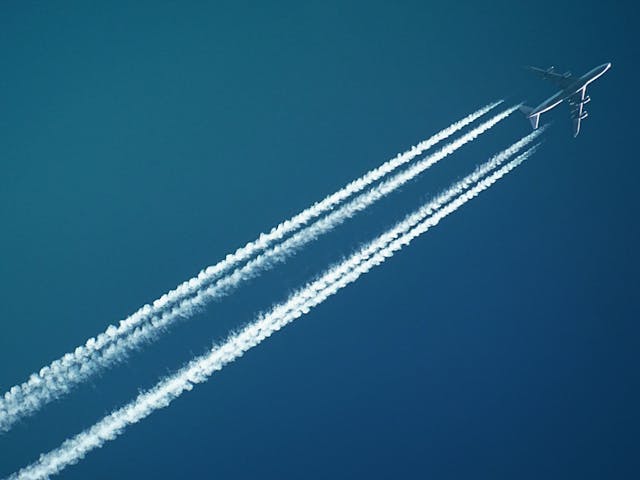


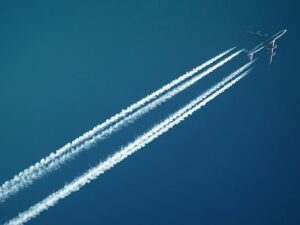
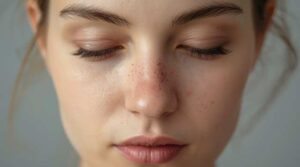

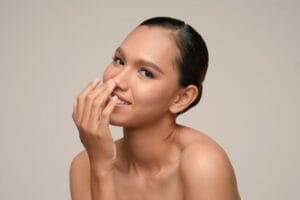

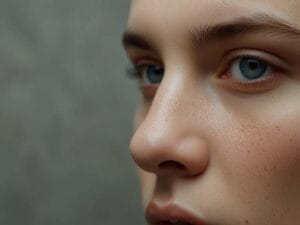
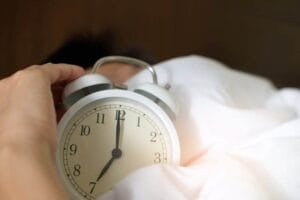
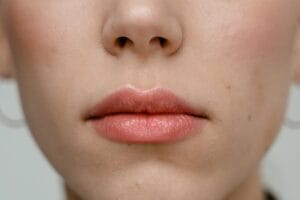
Post Comment